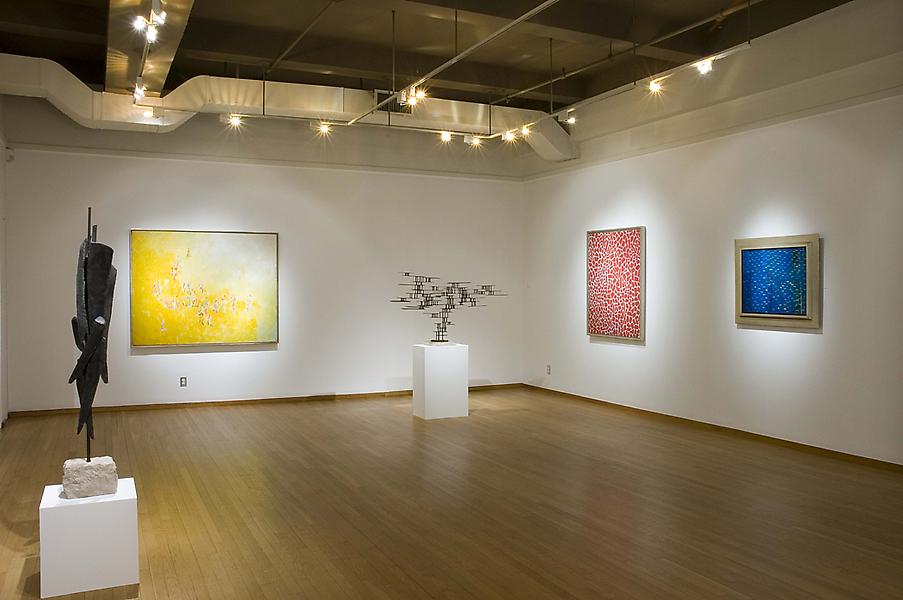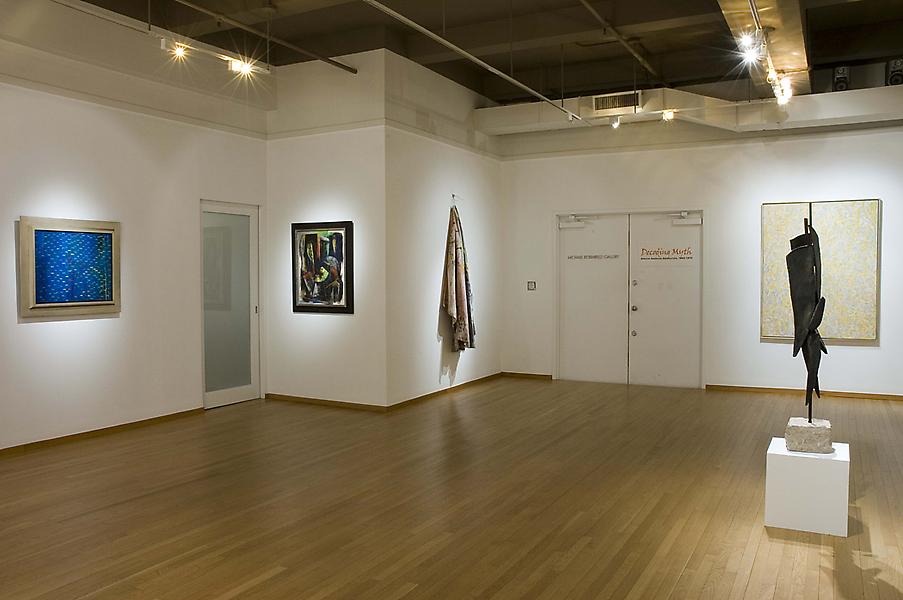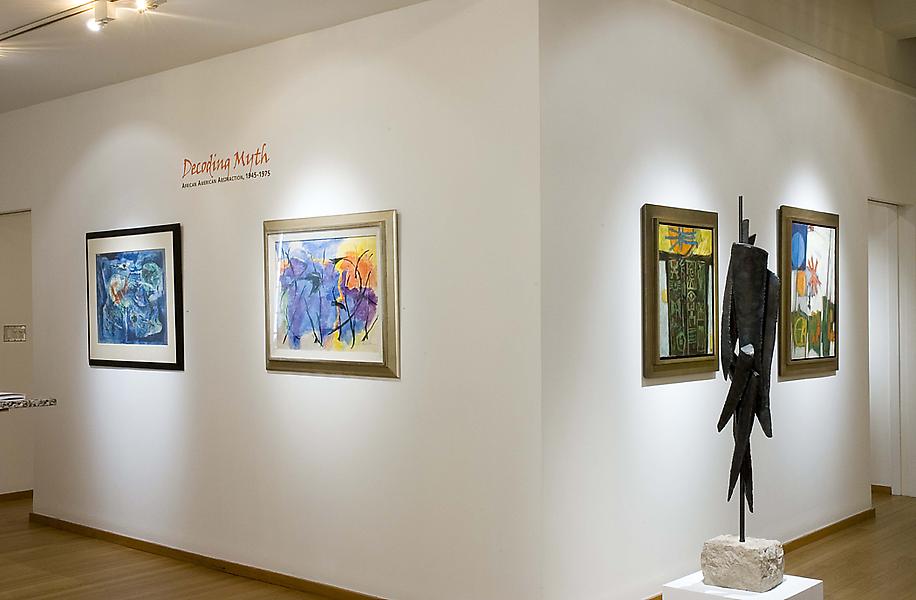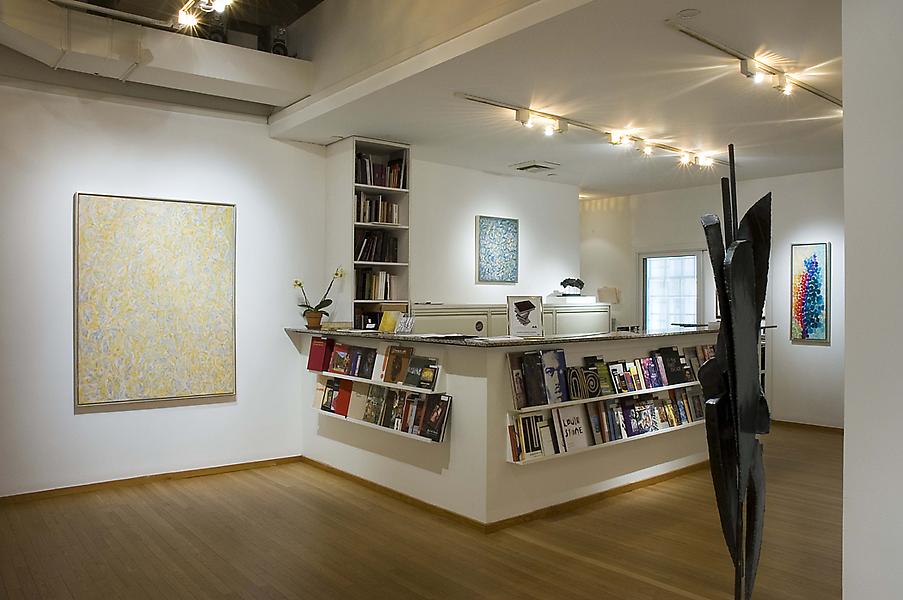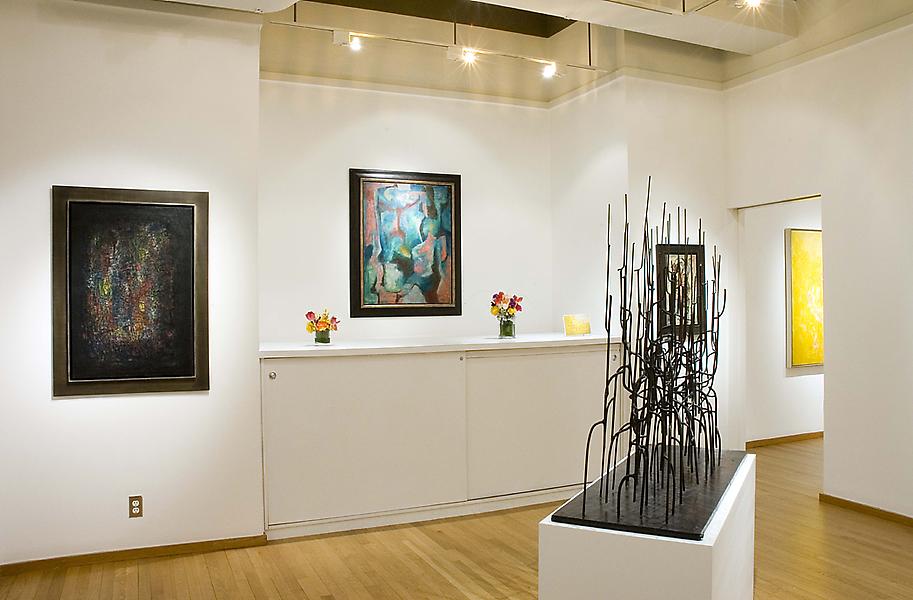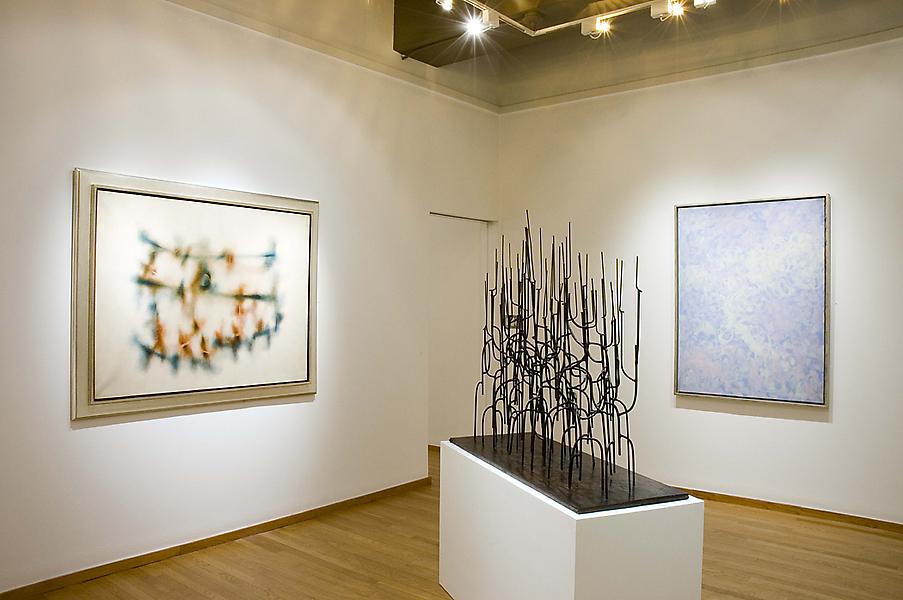Michael Rosenfeld Gallery is pleased to announce the exhibition Decoding Myth: African American Abstraction, 1945-1975, now extended through March 10, 2007.
The exhibition features abstract painting and sculpture by seven prominent artists: Charles Alston, Harold Cousins, Beauford Delaney, Sam Gilliam, Norman Lewis, Alma Thomas and Hale Woodruff. All of these artists embrace formal issues of color, shape and line – allowing for a broad and richly varied interpretation of individual inspiration, references and affinities. Working alongside contemporaries like Adolph Gottlieb, Ad Reinhardt, Franz Kline and Robert Motherwell, these artists helped to define and shape the American abstract movement in the Postwar era. By setting aside representational imagery and specific narratives that referenced the African American experience, many such abstract works have been marginalized or ignored completely, perhaps considered “against type” or irrelevant. Alongside critical dismissal was the disapproval of many in the African American community-at-large, which valued social realism as a more important genre.
Charles Alston (1907-1977)
Born in Charlotte, North Carolina, Charles “Spinky” Alston moved to New York City with his family in 1915, but continued to spend summers in North Carolina until he was fifteen years old. A talented student, Alston took classes at the National Academy of Art and went on to receive his B.A. with a concentration in fine arts from Columbia University (1925-1929). While completing his M.F.A at Columbia University Teachers College, Alston was introduced to African art and aesthetics and was deeply influenced by modern art. After receiving his Master’s (1931), Alston worked at the Harlem Arts Workshop run by Augusta Savage at the 135th Street branch of the New York Public Library. The workshop was partially funded by the Carnegie Foundation and later came under the jurisdiction of the WPA Federal Arts Project. When the school needed more space, Alston found additional room for the school at 306 West 141 Street. Known as “306,” the school became a center for Harlem’s creative community. When funding for the school disappeared, Alston, along with Augusta Savage and Arthur Schomburg, became a founding member of the Harlem Artists Guild. In 1935, Alston became the first black supervisor within the Federal Arts Project when he was assigned to direct the WPA’s Harlem Hospital murals project. Alston’s work was influenced by the social realist art of the 1930s, the politically-charged work of the Mexican Muralists, and by jazz and nightclub culture. An accomplished sculptor, painter, illustrator, and printmaker, Alston was also an influential teacher at both the Art Students League (where he became the first black instructor in 1950) and the City University of New York. He was a founding member of the Spiral Group in 1963. Pomegranate Press will release a monograph on Charles Alston in March 2007, authored by Alvia J. Wardlaw.
Harold Cousins (1916-1992)
Harold Cousins, born in Washington, DC, studied at Howard University where he was influenced by the writings of Alain Locke. After serving in the United States Coast Guard (1943-45), Cousins returned to Washington, DC in 1946 to work as a postal employee and begin art studies. In 1948, Cousins moved to New York City and studied at the Art Students League with William Zorach and Will Barnett. In 1949, with the assistance of the GI Bill, Cousins left the United States and made his home in Paris, where he studied with the modernist sculptor Ossip Zadkine at L’Académie de la Grande Chaumière. Cousins’ work developed from figurative forms in terracotta and wood to abstractions of welded steel. In the early 1950s, Cousins learned oxygen-acetylene welding from sculptor Shinkichi Tajiri and in 1957, Cousins began creating “plaitons”, a term he coined to define his sculpture of repetitive metal plates welded together in a predetermined order. Cousins lived in Paris until 1967, and then moved to Brussels where he worked for the remainder of his life. He completed numerous public commissions and exhibited actively in Europe, but it was not until the 1996 traveling exhibition, Explorations in the City of Light: African-American Artists in Paris, 1945-65, organized by The Studio Museum in Harlem, that Cousins’ work was seen in the United States.
Beauford Delaney (1901-1979)
Beauford Delaney was born in Knoxville, Tennessee and studied with a local artist before moving to Boston in 1923. While in Boston, Delaney studied art at the Massachusetts Normal School, the Copley Society and the South Boston School of Art and spent time admiring the collections of the Museum of Fine Arts and the Isabella Stewart Gardner Museum. In 1929, Delaney moved to New York City and studied for a brief time at the Arts Students League with John Sloan and Thomas Hart Benton. His paintings of the 1940s and early 1950s consist largely of portraits, modernist interiors and street scenes executed in impasto with broad areas of vibrant colors. Delaney’s interest in the arts also included poetry and jazz, and he formed close friendships with writers such as James Baldwin and Henry Miller, and other artists, including Alfred Stieglitz, Georgia O’Keefe, and Al Hirschfeld. Although he maintained relationships with the artists of 306 and was a member of the Harlem Artists Guild, Delaney was consumed by his own artistic vision and was firmly connected to the Greenwich Village artistic community. In 1953, Delaney left New York and traveled to Europe, settling in Paris. Feeling a new sense of freedom from racial and sexual biases, Delaney focused on creating lyrical, colorful non-objective abstractions. These paintings, consisting of elaborate and fluid swirls of paint applied in luminous hues, are pure and simplified expressions of light. In 1978, The Studio Museum in Harlem organized his first major retrospective exhibition, and in 1979, Delaney died in Paris while hospitalized for mental illness. Recently, Michael Rosenfeld Gallery has presented two solo exhibitions of Delaney’s work: Beauford Delaney: Paris Abstractions from the 1960s (September 14-November 11, 1995) and Beauford Delaney: Liquid Light – Paris Abstractions, 1954-1970 (September 9-October 30, 1999). Delaney’s work was the subject of two recent traveling exhibitions: Beauford Delaney: The Color Yellow, organized by the High Museum of Art, Atlanta in 2002 and Beauford Delaney: From New York to Paris, organized by The Minneapolis Institute of Arts in 2005.
Sam Gilliam (b.1933)
Born in Tupelo, Mississippi, Sam Gilliam studied at the University of Louisville where he received his degree in fine arts in 1955 and his masters in 1961. Internationally recognized as the foremost contemporary African-American Color Field painter, Gilliam is widely known for his large, color-stained canvases which he drapes and suspends from ceilings and/or walls and thick “raked” canvases. Influenced by the emergence of abstract expressionism, the New York School, Color Field Painting and the Washington Color School, Gilliam’s early style developed from brooding figural abstractions to large paintings of flatly applied color and paintings of diagonal stripes on square fields. In 1965, Gilliam became the first painter to introduce the unsupported canvas and in 1975 he began to create geometric collages influenced by jazz. Later series include “quilted” paintings and, most recently, textured paintings that juxtapose metal forms. Gilliam’s work as an artist and teacher has influenced many. He lives and continues to works in Washington, DC. In 2005, Corcoran Gallery of Art organized the major traveling exhibition Sam Gilliam: A Retrospective.

